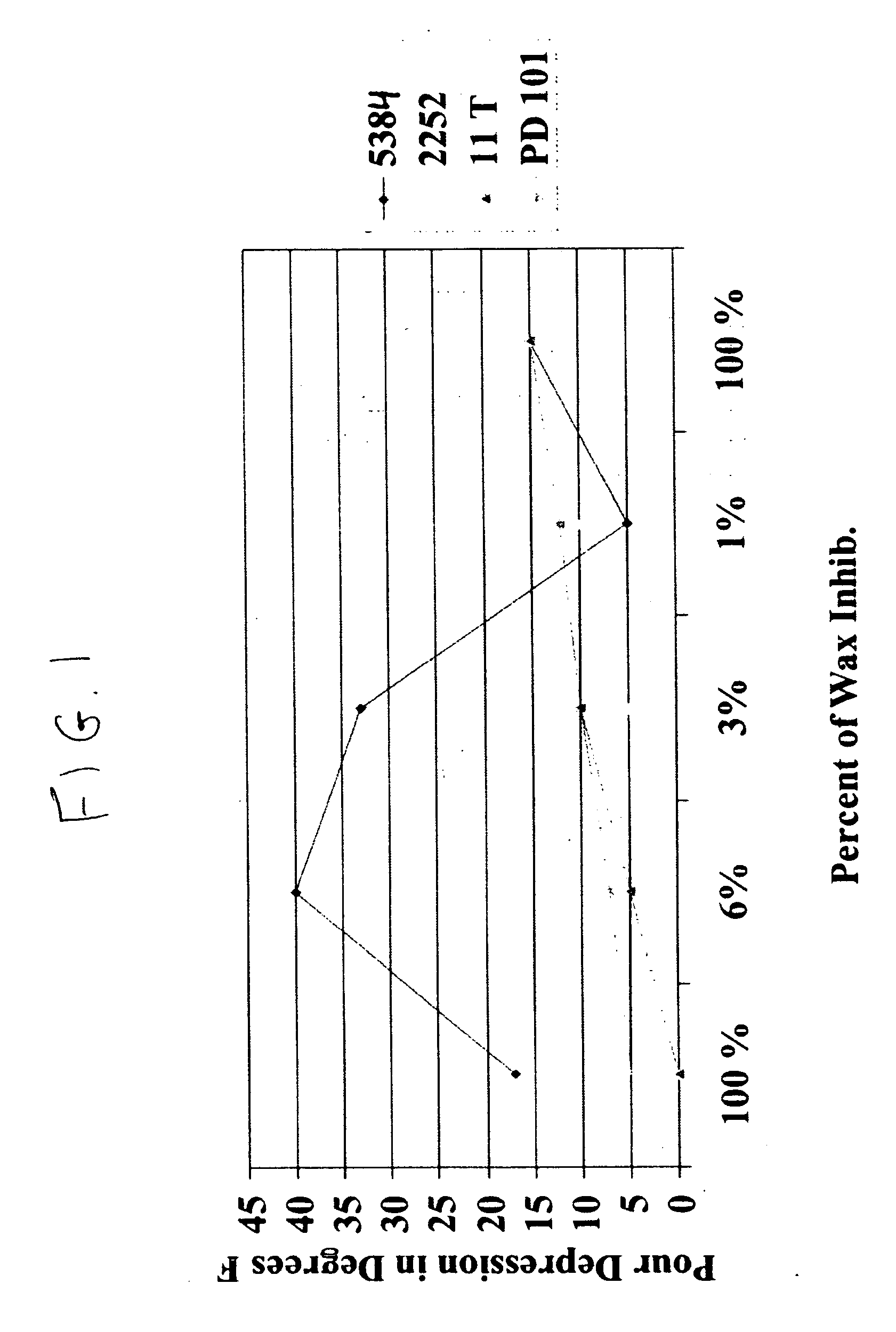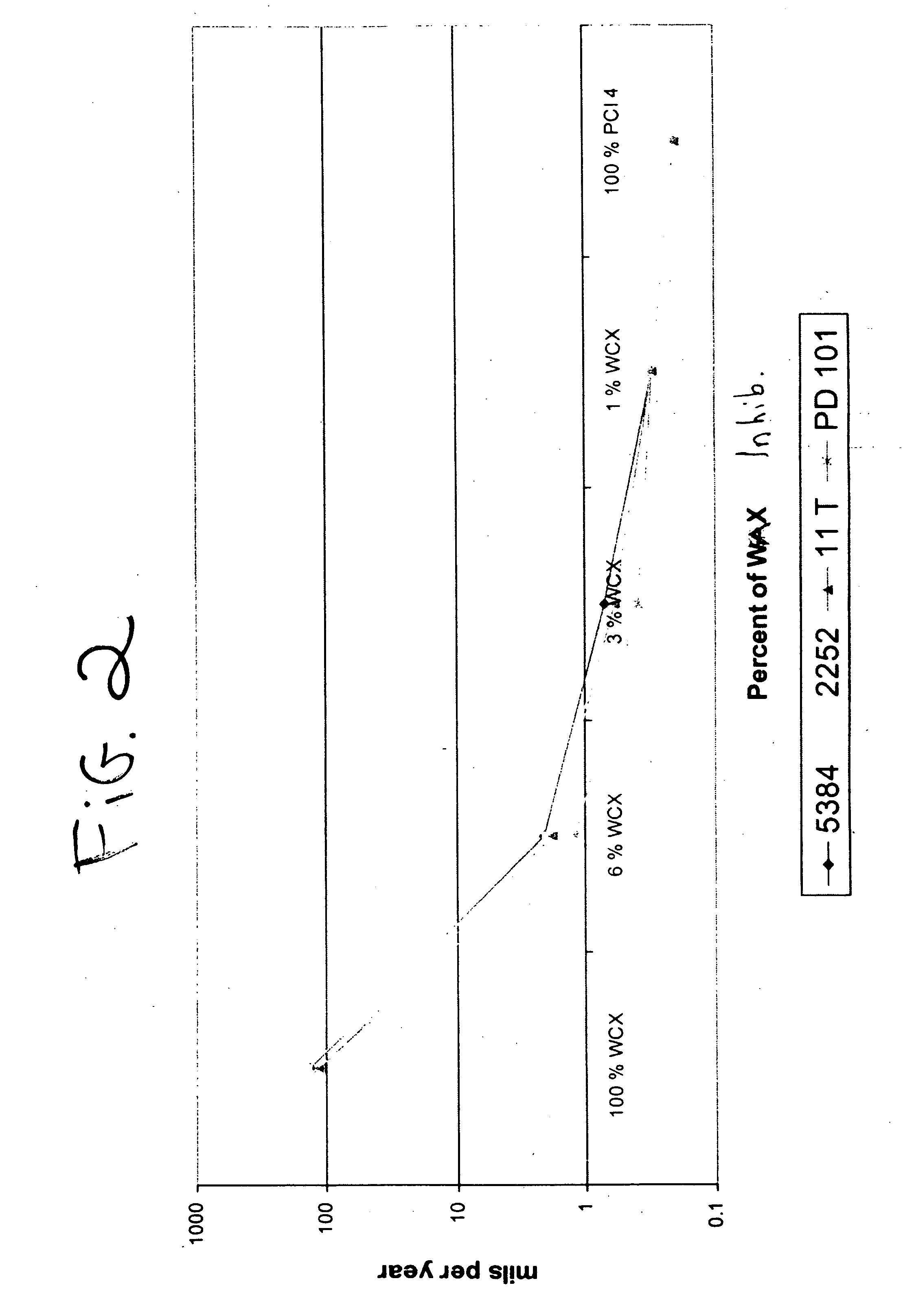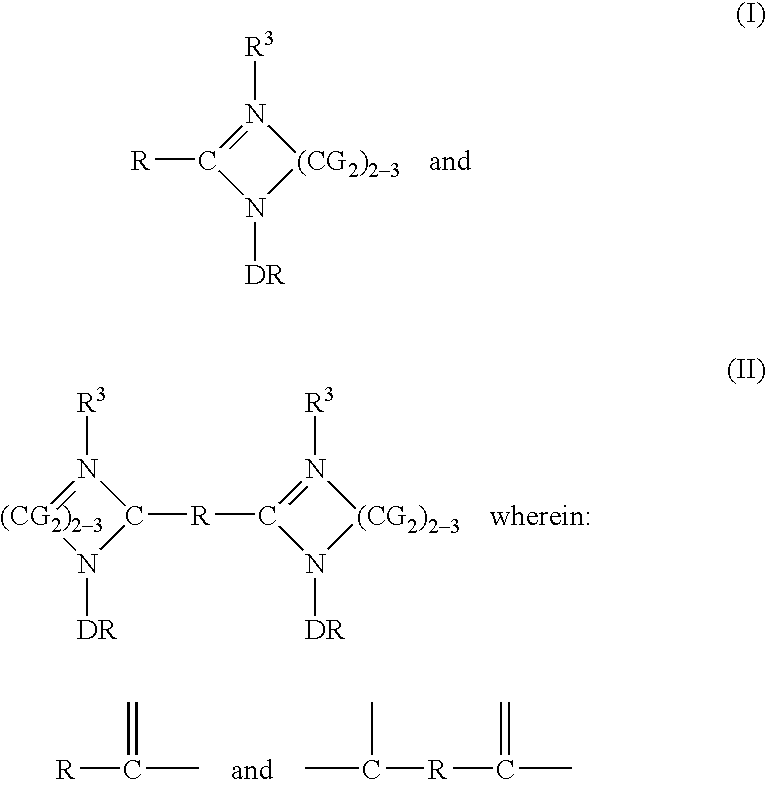Pour point reduction and paraffin deposition reduction by use of imidazolines
- Summary
- Abstract
- Description
- Claims
- Application Information
AI Technical Summary
Benefits of technology
Problems solved by technology
Method used
Image
Examples
example 1
[0038] Composition A was prepared by combining 76.3 weight percent of a heavy aromatic distillate, 2 weight percent isopropyl alcohol, 11.8 weight percent an imidazoline derived from a 1:2 weight ratio of diethylene triamine and tall oil fatty acid, 3.2 weight percent dimer and trimer tall oil fatty acids, 5.2 weight percent of oil soluble phosphate ester of ethoxylated octyl to tetra decyl alcohol, 1 weight percent of demulsifier, TB-976, a product of BJ Services Company, and 0.5 weight percent oxyalkylated nonyl phenol. Crude diethylene triamine and tall oil fatty acid were used as the source of imidazoline. The dimers and trimers were further derived from crude tall oil fatty acid.
[0039] Composition B was prepared by combining 25 weight percent of an imidazoline derived from a 1:2 weight ratio of refined diethylene triamine and refined tall oil fatty acid and 75 weight percent of a heavy aromatic distillate.
[0040] Composition C was prepared by combining 25 weight percent crude ...
example 2
[0043] The change in deposited paraffin content in the crude oils of Example 1 using Composition A, B, C and D was determined by a “Cold Finger Test,” as described at page 115 of CRUDE OIL, WAXES, EMULSIONS AND ASPHALTENES by J. R. Becker, published by PennWell Publishing Co. in Tulsa, Okla., wherein a surface (cold finger) was placed in a sample of the heated crude oil and cooling fluid (provided by a thermostatically controlled circulating heating and cooling bath) was circulated through the interior of the cold finger. The oil was gently agitated about the cold finger with a magnetic stirrer while the oil was maintained at a temperature above its cloud point, and deposits form on the cold finger's surface. The amount of deposits was determined and contrasted with the amount of deposits formed in comparative samples containing no Composition A, B, C or D. The average results are set forth in Table II:
TABLE IIPercent PreventionComposition AComposition BComposition CComposition DN...
example 3
[0044] The effect of imidazolines on conventional or non-imidazoline paraffin inhibitors was compared. The imidazoline used in this Example was Composition A. The paraffin inhibitors used were:
[0045] 5384, an ethylene vinyl acetate paraffin inhibitor, commercially available from E. I. DuPont de Nemours and Company;
[0046] 2252, a maleic anhydride ester paraffin inhibitor, commercially available from Lubrizol;
[0047] 11T, a copolymer of behenyl methacrylate and vinyl pyridine, a paraffin inhibitor commercially available from Shell Oil; and
[0048] PD101, a maleic anhydride / olefin ester paraffin inhibitor, commercially available from P Chem.
[0049] About 250 ppm of the samples was introduced to Devon Freston crude, in accordance with the procedures set forth in Example 1 above. The composition of the samples varies from 100% conventional paraffin inhibitor (no solvent added) to 100% imidazoline (no solvent added). The remaining compositions contained about 25% of imidazoline, 1 to 6% ...
PUM
 Login to View More
Login to View More Abstract
Description
Claims
Application Information
 Login to View More
Login to View More - R&D
- Intellectual Property
- Life Sciences
- Materials
- Tech Scout
- Unparalleled Data Quality
- Higher Quality Content
- 60% Fewer Hallucinations
Browse by: Latest US Patents, China's latest patents, Technical Efficacy Thesaurus, Application Domain, Technology Topic, Popular Technical Reports.
© 2025 PatSnap. All rights reserved.Legal|Privacy policy|Modern Slavery Act Transparency Statement|Sitemap|About US| Contact US: help@patsnap.com



